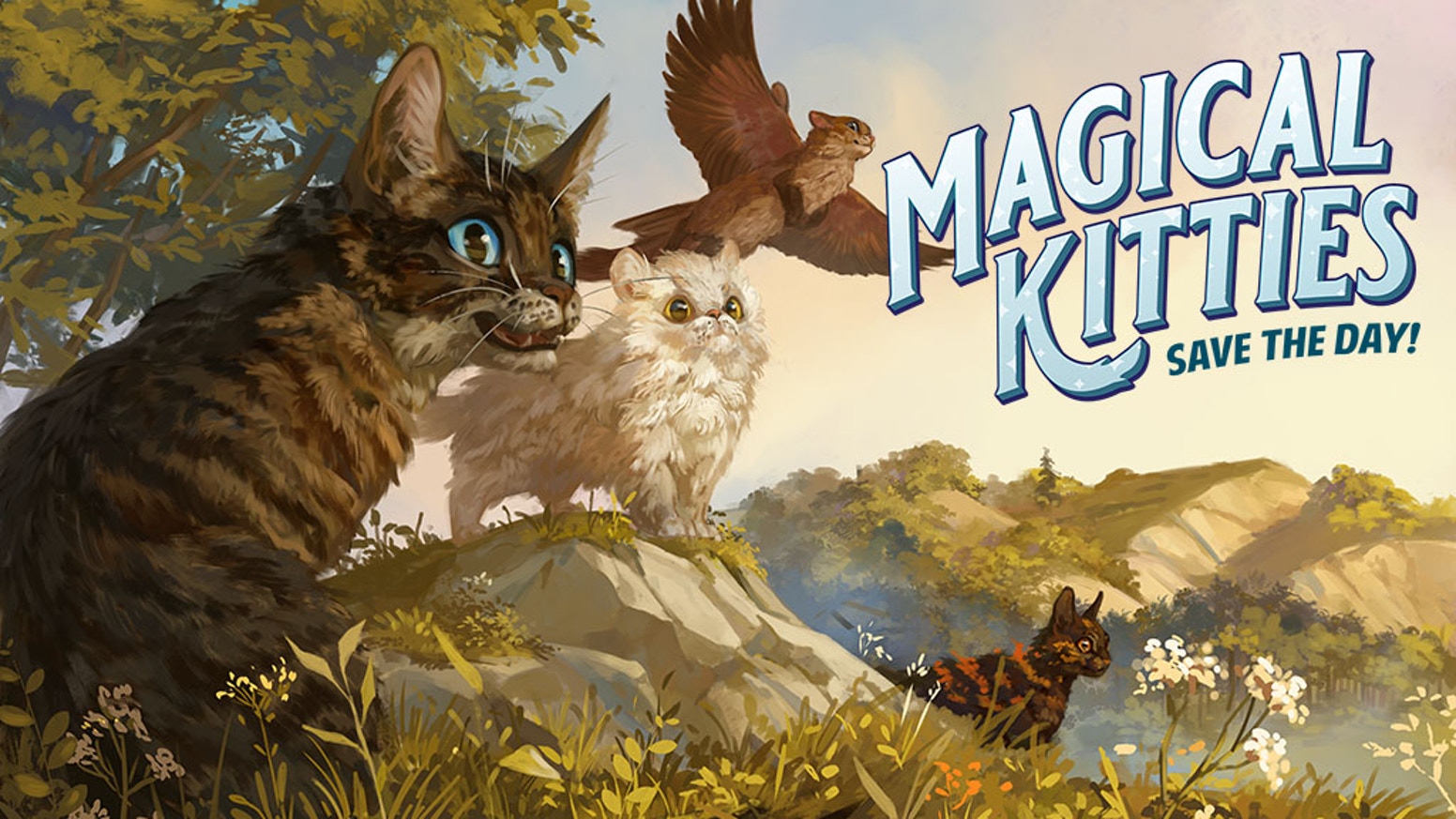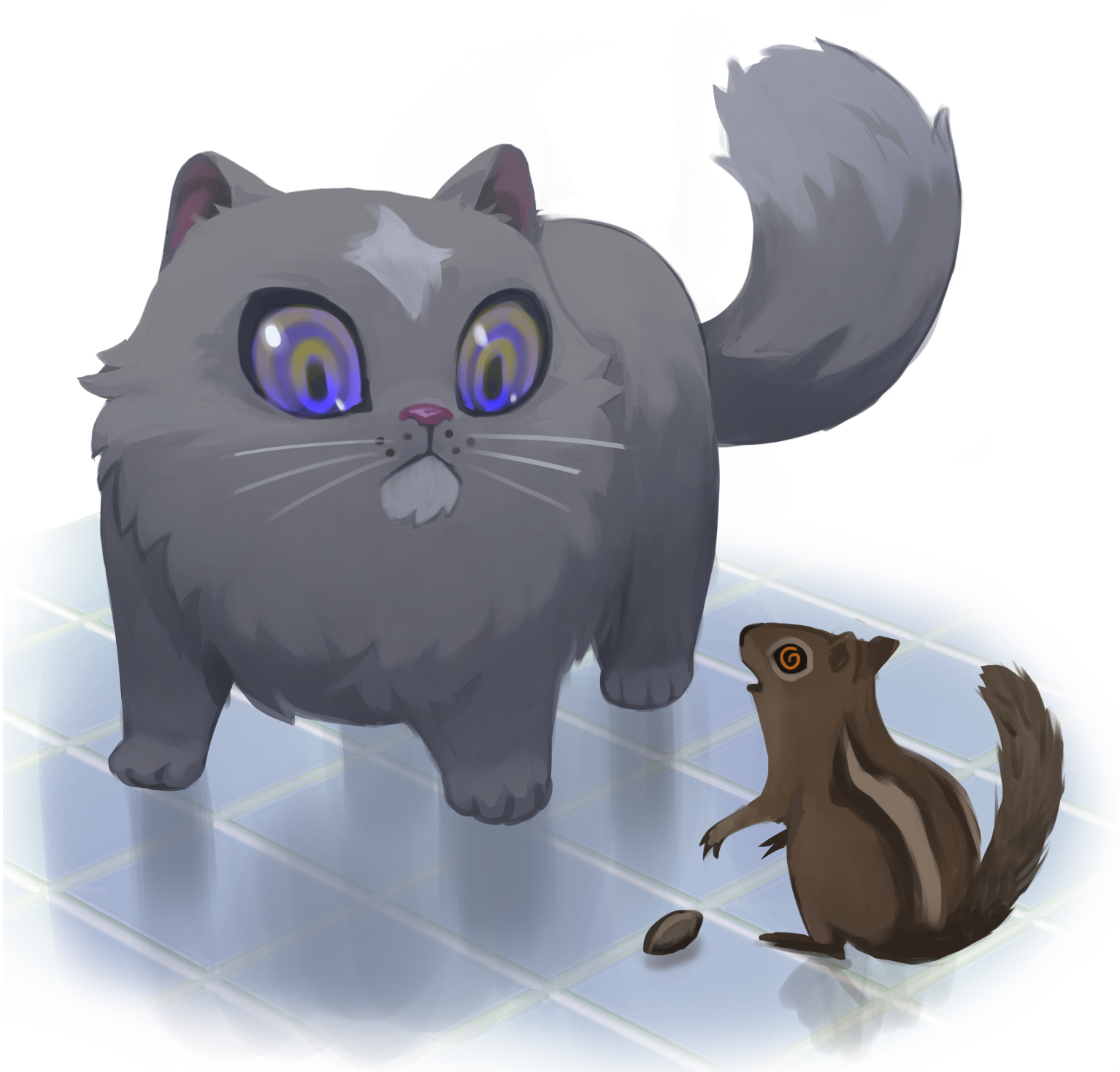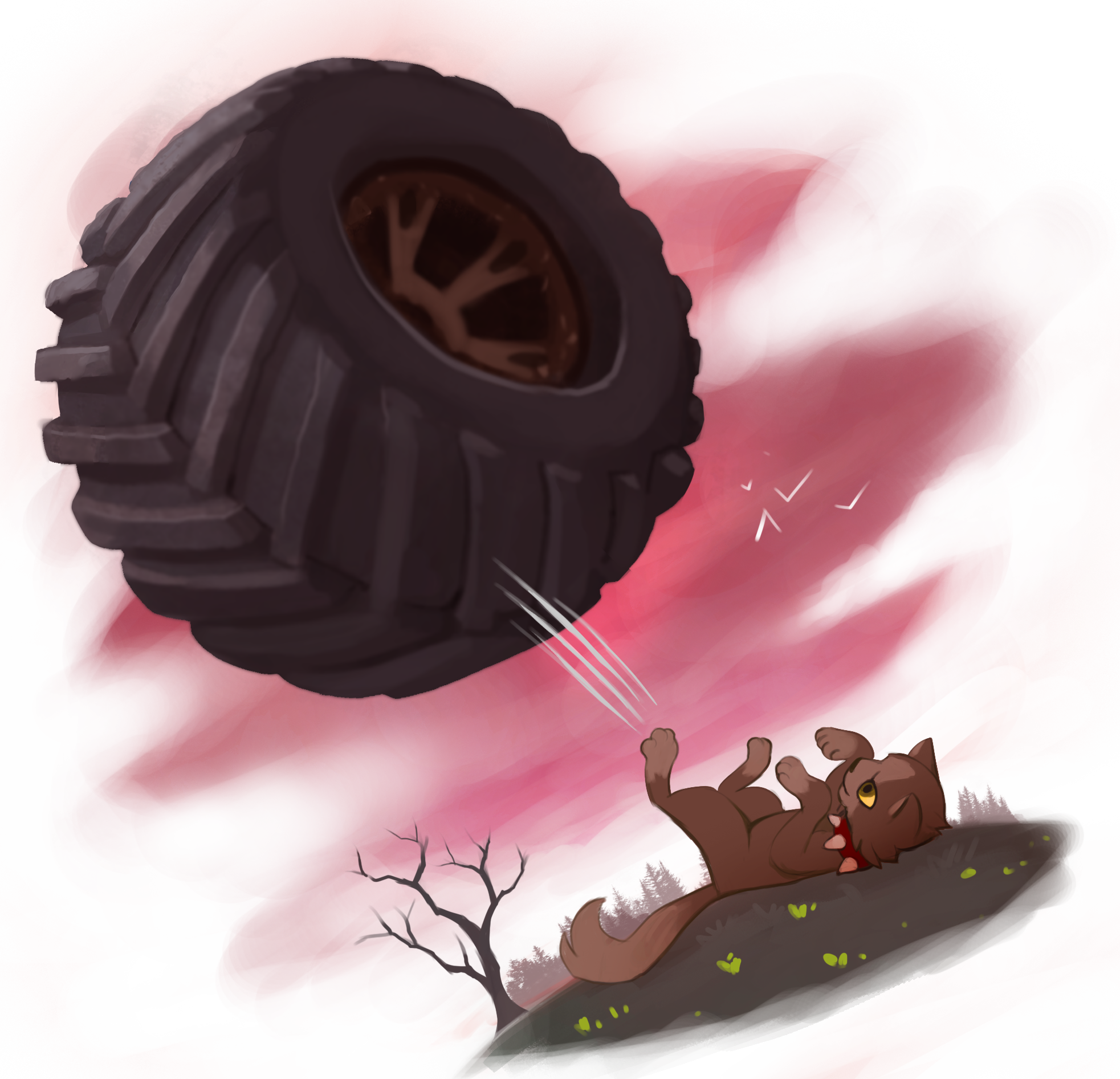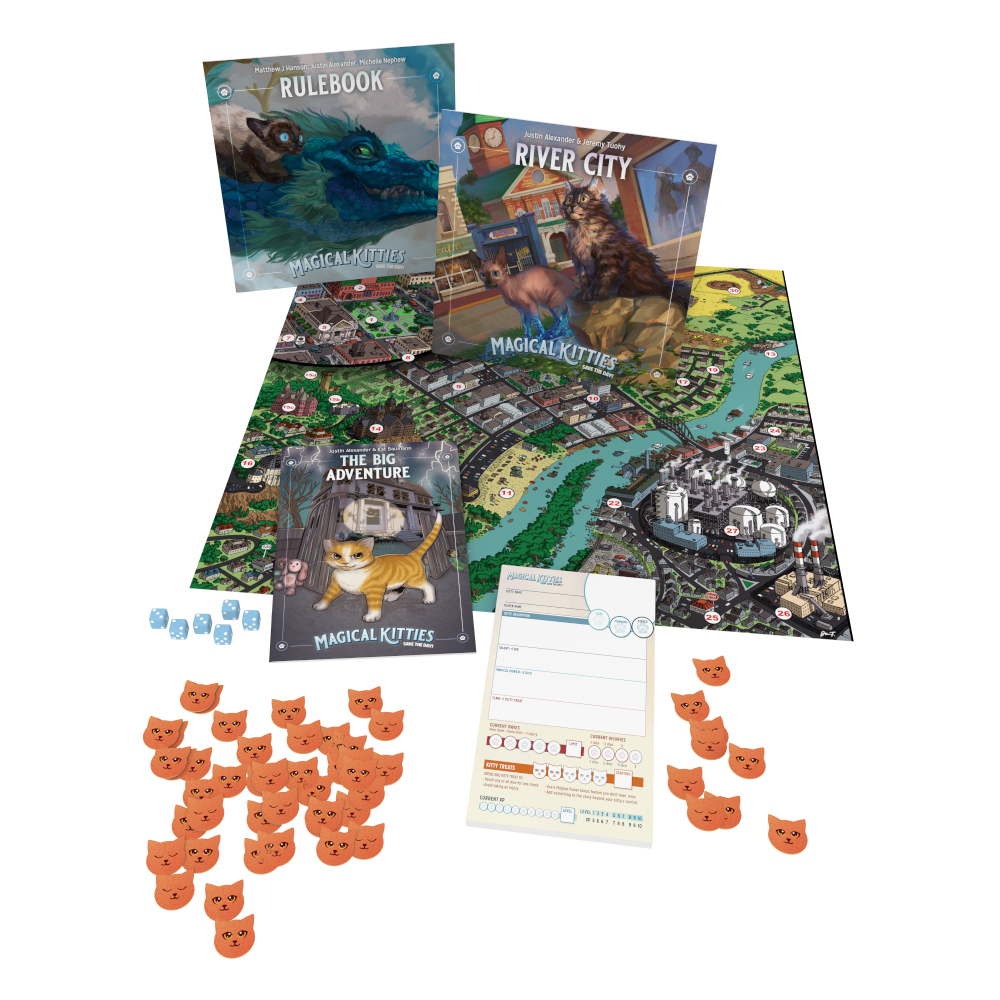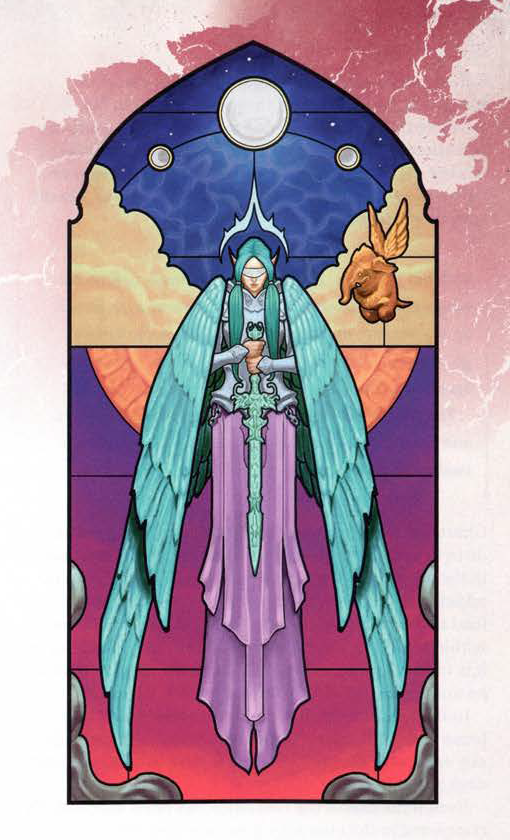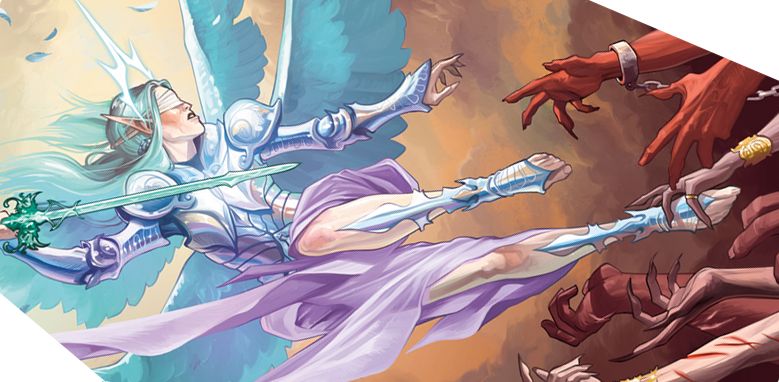DISCUSSING
In the Shadow of the Spire – Session 24D: The Second Hound of Ghul
Everyone fell silent. Impossibly, the shadows seemed to deepen. And then, out of the darkness, the second hound of Ghul appeared: It was a bony, undead thing. At its shoulder, it stood nearly twice as tall as Agnarr. Four interlocking, razor-sharp sabered fangs punctuated a jaw of jagged teeth. Its claws were nearly as large. Its bones were thick and at the end of a long, sinuous tail was a bulbous ball of bone twice the size of a grown man’s skull.
“By the gods…” Elestra murmured.
In this session we see the dawn of one my favorite RPG in-jokes of all time, as Tithenmamiwen tells the illiterate Agnarr that “C-A-T” is the elvish word for “faithful companion,” leading the barbarian to name his new pet dog Seeaeti. I think every long-running campaign develops these shibboleths that are only meaningful to the players, and this one has been part of our group for thirteen years now. (And will probably remain so until we’re all dust in our graves.)
Speaking of Seeaeti, if you’ve been following In the Shadow of the Spire you know that getting a dog has been a major goal for Agnarr as a character. I’ve previously talked about how other milestones in this quest including important character crucibles that permanently reshaped the course of Agnarr’s life (and the entire campaign).
When I was designing the Laboratory of the Beast and included the dog-soon-to-be-known-as-Seeaeti, I did suspect that this particular hound might become Agnarr’s. In fact, would I have included the slumbering dog if Agnarr hadn’t been looking for a dog? Maybe not (leaning towards probably not).
(At the table, though, there was a moment when I thought Tee was going to kill the dog before Agnarr even had a chance to see it. Given my previous comment about a thirteen year shibboleth, it’s really weird to think about that alternate reality.)
Later in the session, the group runs into an undead dog and Ranthir uses a spell to enslave it. For awhile there, it actually looked like this dog would also become a permanent addition to the group, but (as you can see here) it ended up getting destroyed instead.
Ranthir, of course, did not have a long-standing goal to get a dog and the ghulworg skeleton wasn’t something that I had anticipated becoming a “hireling.” So you can kind of see both sides of the coin here: Elements that we bring into the narrative because they’re long-standing goals of the players/their characters and elements that emerge out of the narrative.
We saw a third sign of this coin (thus irreparably rupturing our metaphor) earlier in this session, when Tee reached out to the Dreaming Apothecary and arranged to purchase a magical item that she particularly wanted. (With the twist that rather than just getting the magical lockpicks she wanted, the Dreaming Apothecary delivering a cool lockpicking ring.)
A few years ago there was a big folderol about magic item wish lists. I’m not actually sure what specifically prompted this advice fad, but it seems to have faded away a bit, along with the controversy that surrounded it.
Basically, the advice was that players should prep a wish list of the magic items (and other stuff) that they wanted for their characters and give it to their DM so that the DM could then incorporate that stuff into the campaign.
The controversy arose because many felt that this pierced the veil and ruined immersion, “Oh! I’ve always wanted a +1 flaming ghost touch dire maul! It’s so wonderful that we just coincidentally found it in this pile of treasure!” It also reeked of a sense of privilege and laziness: “Here’s my shopping list, Ms. Dungeon Master, please have it delivered to me as soon as possible!”
Personally, I think the controversy mostly misses the point.
First, one simply has to acknowledge that many people are playing in linear and/or railroaded campaigns. I can talk endlessly about why that’s a bad idea and that there are better ways to run your campaign, but unfortunately that’s still not true for a lot of people. Probably most people. And when a GM runs a linear/railroaded campaign, one of the many problems they create for themselves is a massive responsibility for everything that happens in the game: Since the players don’t have any meaningful control over what happens, the GM needs to ensure that every challenge is correctly balanced; that everyone has the appropriate spotlight time; and on and on and on and on.
Within that broken paradigm, for better or for worse, the magic item wish list provides the players with a method for communicating their desires as players, and it’s also useful to the GM who has, unfortunately, made themselves completely responsible for everything that goes into the game (particularly if they’re not using random methods for stocking treasure). It’s good for everybody involved. It’s good advice.
But, in my opinion, the magic item wish list has utility even beyond that linear/railroaded paradigm. It’s really just a specific subset of the wider concept of players clearly communicating what their goals (and the goals of their characters) are. That expression can be done diegetically, but there’s absolutely nothing wrong with it being directly communicated in the metagame (via a character’s background, a frank discussion, a wish list, or whatever). And although I’ve seen some who feel that it’s not “realistic” for a fantasy hero to say, “I really need some magic lockpicks!” I just don’t see it that way. They live in a world filled with magic and they use that magic in their daily lives to accomplish their goals. It’s no different than me trying to figure out what tripod I need for my teleprompter.
Here’s the key thing, though: The perception is that the magic item wish list makes the players passive; that by expressing their desire to the GM, it automatically follows that they’re just going to sit back and wait for the GM to deliver what they want without making any effort on their own part.
In my experience, this isn’t really the case. With a “wish list” in hand, there are still three core techniques for how it can be fulfilled:
- The players can take initiative. (Tee ordering her magic lockpicks. Or Agnarr’s earlier efforts in the campaign to find a stray dog.)
- The GM can seed their goals into their adventure prep. (Putting a sleeping dog into Ghul’s Labyrinth, which the PCs are exploring for reasons that have nothing to do with the dog.)
- The GM can seed the opportunity to achieve their goals into the campaign world. (For example, by having them hear a rumor in a local tavern that the legendary +1 flaming ghost touch dire maul of Leeandra the Nether Brute might lie within the Tomb of Sagrathea.)
Understanding what the goals of your players and their characters are will allow you to use the full plethora of these techniques to enrich the campaign. Achieving that understanding can come in a number of different ways, whether it’s a wish list, a character background, session post mortems, or diegetically framed campfire chats.
NEXT:
Campaign Journal: Session 25A – Running the Campaign: Re-Skinning
In the Shadow of the Spire: Index




